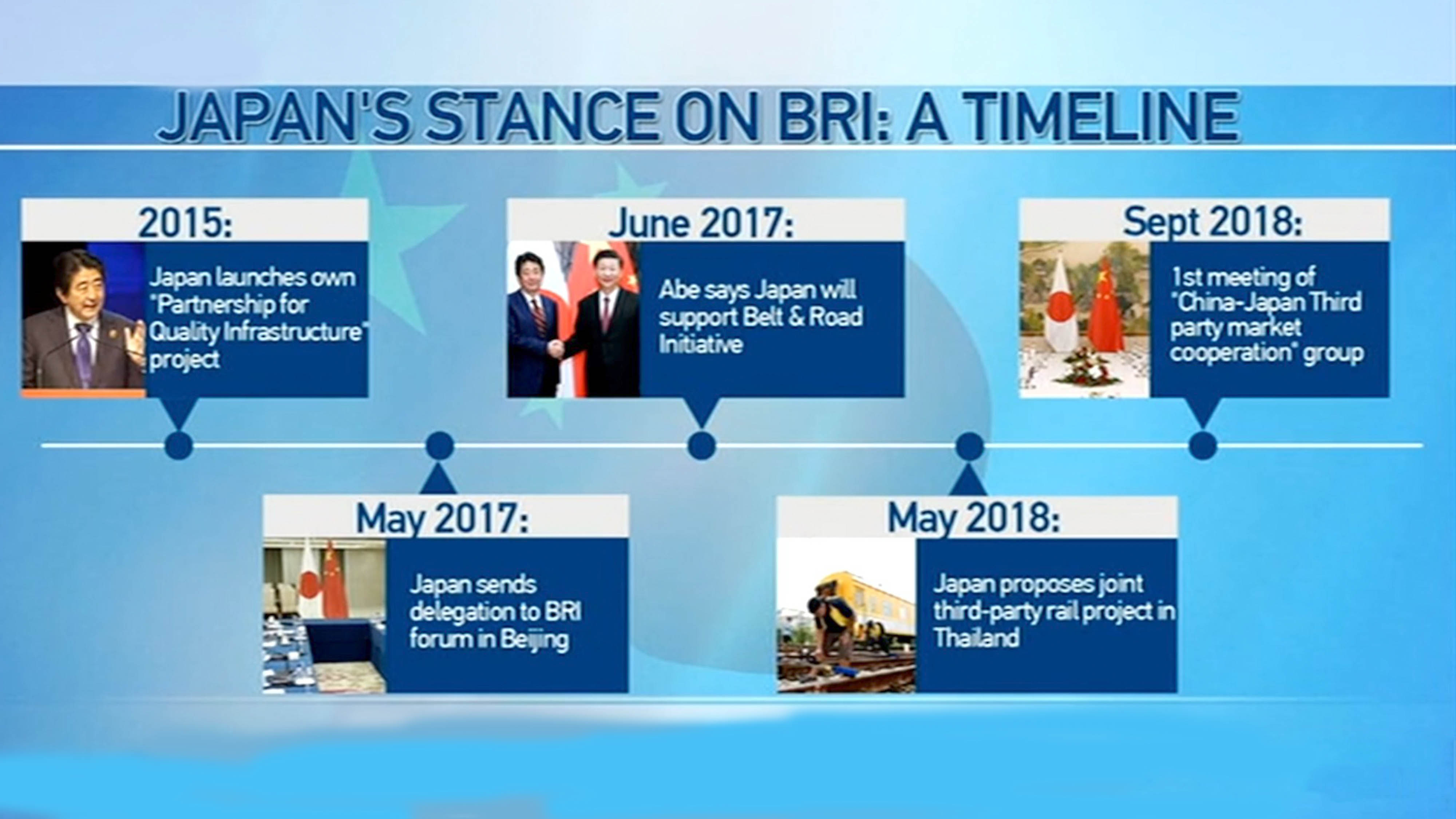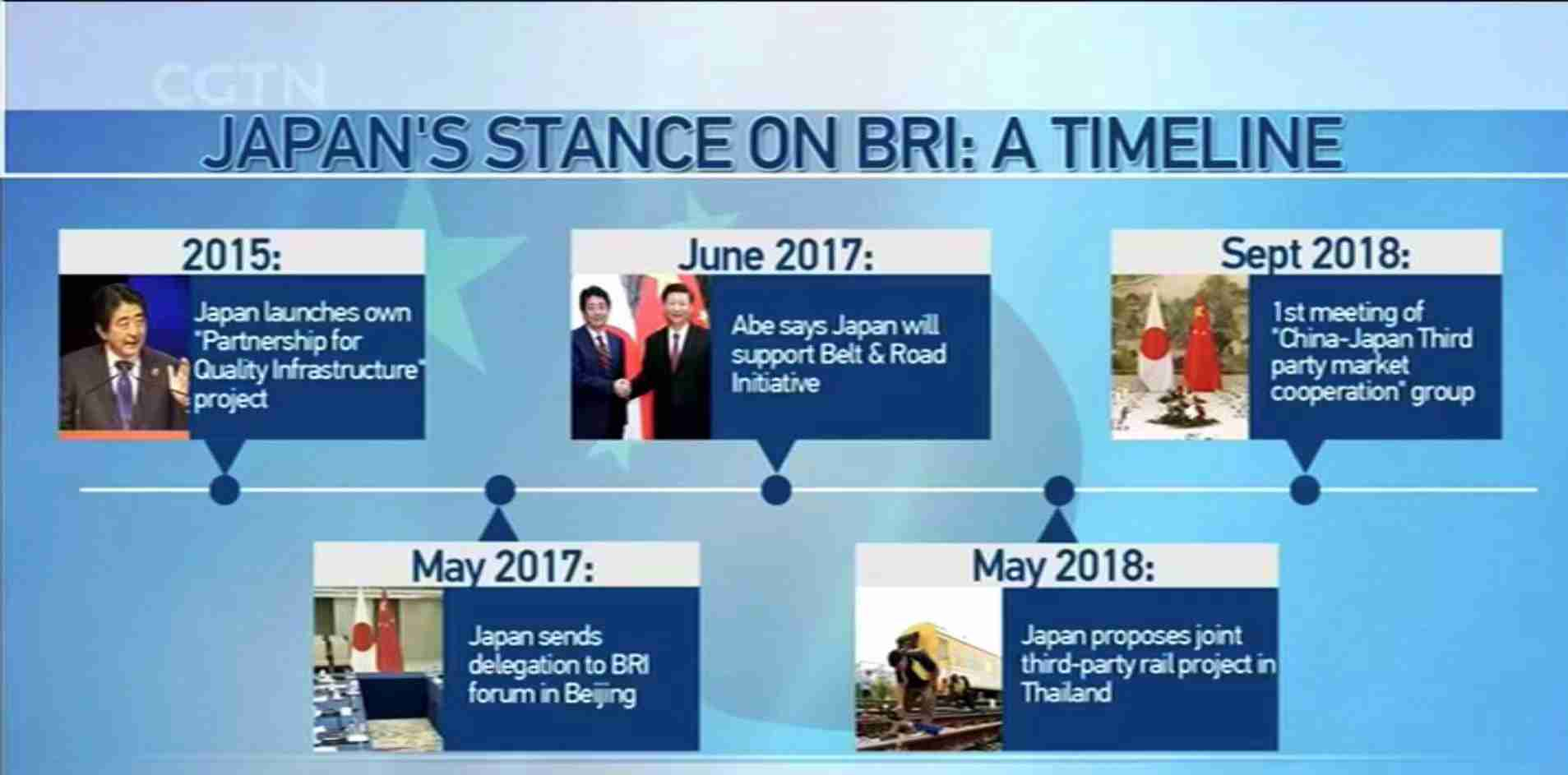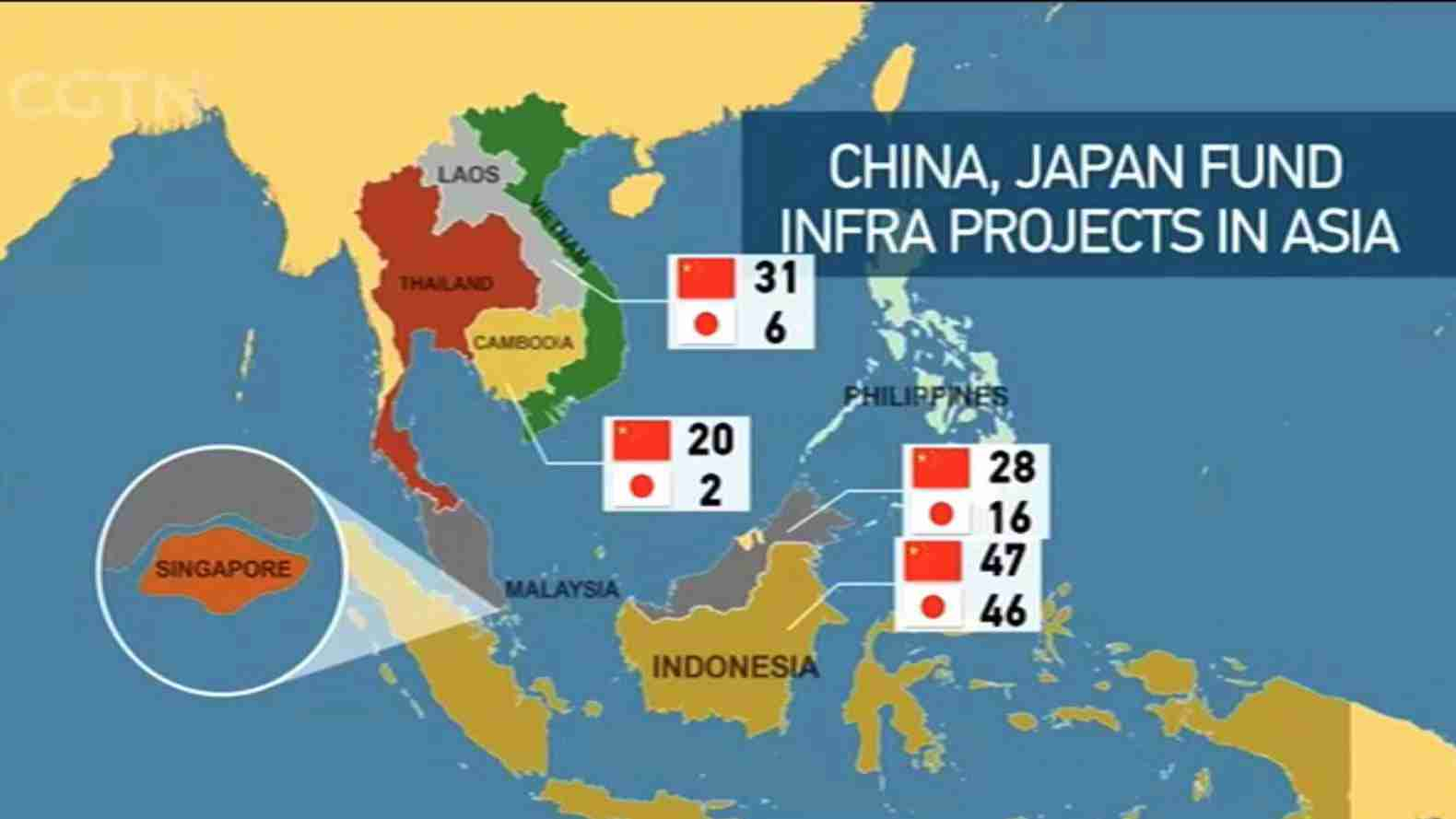
Business
17:07, 26-Oct-2018
Timeline of Japan's stance on Belt & Road
Updated
16:58, 29-Oct-2018
By CGTN's Nayan Seth
01:45

In the last four years, Japan has evolved its stance on China's Belt and Road Initiative. From being cautious in 2013 to fully endorsing it in 2017, Japan has shown a keen interest in active collaboration under the ambit of the initiative.

About two years after China announced the Belt & Road initiative (BRI), Japan launched its own version of the BRI "Partnership for Quality Infrastructure" project.
But by May 2017, the world's third largest economy realized the significance and scope of the Chinese project.
Then a Japanese delegation was sent to attend the first Belt and Road forum in Beijing. A month later, Japanese Prime Minister Shinzo Abe, for the first time, publicly endorsed the initiative.
During Chinese Premier Li Keqiang's visit to Tokyo in May, the Abe government proposed a joint China-Japan rail project in Thailand.
China responded positively, and both sides agreed to create a mechanism "China-Japan Third Party Market Cooperation" to discuss infrastructure projects in other countries. The group held its first meeting last month in Beijing.

Both China and Japan have actively participated in infrastructure development in South East Asia. According to data provided by BMI research, there are about 20 China-backed projects in Cambodia and Japan has two.
In neighboring Laos, China is involved in more than 30 projects, while Japan backed just above five.
In Indonesia, both countries have almost 50 infrastructure contracts each.
Moving to Malaysia, China is working on close to 30 projects and Japan is involved in 16.
Apart from these, both nations are helping countries like the Philippines, Singapore, Thailand and Vietnam develop their infrastructure.
(Video by Wang Yushen)

SITEMAP
Copyright © 2018 CGTN. Beijing ICP prepared NO.16065310-3
Copyright © 2018 CGTN. Beijing ICP prepared NO.16065310-3